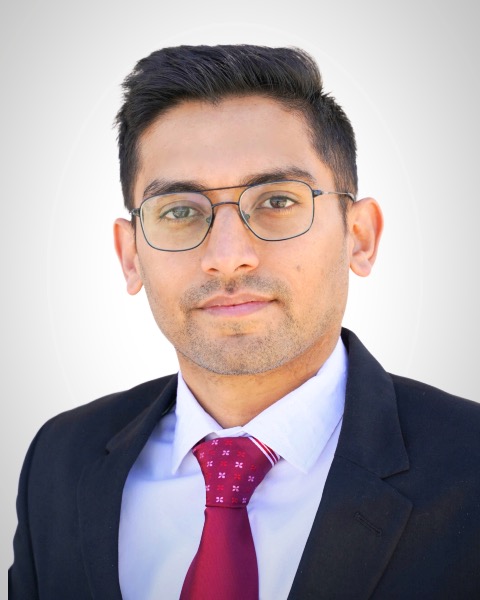Cerebrovascular
Outcomes of Surgical Revascularization in Moyamoya Patients with Severe Brain Atrophy

Kautilya R. Patel, M.Ch. Neurosurgery
Research fellow
University of Nebraska Medical Center
Omaha, NE, US
Presenting Author(s)
Introduction: Advanced Moyamoya disease patients suffer from chronic cerebrovascular insufficiency with acute ischemic insults, leading to brain atrophy and cognitive decline. The outcomes of revascularization procedures in Moyamoya patients with marked brain atrophy are not yet clearly known.
Methods: This retrospective study uses an approach based on global cerebral atrophy scale to identify patients with severe brain atrophy from a single surgeon series of Moyamoya patients who underwent revascularization procedures. Clinical and radiological outcomes in these patients were studied and compared between direct and indirect revascularization groups.
Results: Out of 153 patients in the series, 16 patients had severe brain atrophy (cortical atrophy score ≥ 8). Mean age of the patients was 8.9 years. The presenting symptoms were recurrent TIA (6 patients, 37.5%), major stroke (7 patients, 43.75%) and seizures (3 patients, 18.75%). 14 patients underwent surgeries for both the hemispheres while 2 patients underwent surgery for 1 hemisphere. Of the 30 hemispheres, 17 (56.7%) underwent direct revascularization and 13 (43.3%) underwent indirect revascularization. Mean follow-up duration was 38.8 months. Median mRS score improved from 3 (preoperative) to 1.5 (last follow-up) with 11 patients (68.75%) showing an improvement in their mRS. 13 patients (81.25%) showed an improvement in their presenting symptoms; 11 patients (out of 14 undergoing school / college education, 78.57%) showed a subjective improvement in their scholastic performance. Mean ASL score for the lower perfusion hemispheres improved from 7.9 (preoperative) to 8.9 (at follow-up) and for the higher perfusion hemispheres improved from 9.6 to 10.45 after revascularization. Differences between preoperative and postoperative ASL scores for both the groups were statistically significant. There was no significant difference in clinical and radiological outcomes between direct and indirect revascularization groups.
Conclusion : Moyamoya patients with severe brain atrophy show improvement in paroxysmal symptoms, overall clinical functioning status and radiological perfusion after undergoing either direct or indirect revascularization.
Methods: This retrospective study uses an approach based on global cerebral atrophy scale to identify patients with severe brain atrophy from a single surgeon series of Moyamoya patients who underwent revascularization procedures. Clinical and radiological outcomes in these patients were studied and compared between direct and indirect revascularization groups.
Results: Out of 153 patients in the series, 16 patients had severe brain atrophy (cortical atrophy score ≥ 8). Mean age of the patients was 8.9 years. The presenting symptoms were recurrent TIA (6 patients, 37.5%), major stroke (7 patients, 43.75%) and seizures (3 patients, 18.75%). 14 patients underwent surgeries for both the hemispheres while 2 patients underwent surgery for 1 hemisphere. Of the 30 hemispheres, 17 (56.7%) underwent direct revascularization and 13 (43.3%) underwent indirect revascularization. Mean follow-up duration was 38.8 months. Median mRS score improved from 3 (preoperative) to 1.5 (last follow-up) with 11 patients (68.75%) showing an improvement in their mRS. 13 patients (81.25%) showed an improvement in their presenting symptoms; 11 patients (out of 14 undergoing school / college education, 78.57%) showed a subjective improvement in their scholastic performance. Mean ASL score for the lower perfusion hemispheres improved from 7.9 (preoperative) to 8.9 (at follow-up) and for the higher perfusion hemispheres improved from 9.6 to 10.45 after revascularization. Differences between preoperative and postoperative ASL scores for both the groups were statistically significant. There was no significant difference in clinical and radiological outcomes between direct and indirect revascularization groups.
Conclusion : Moyamoya patients with severe brain atrophy show improvement in paroxysmal symptoms, overall clinical functioning status and radiological perfusion after undergoing either direct or indirect revascularization.

.jpg)